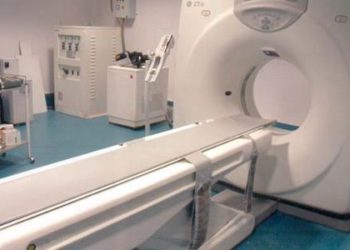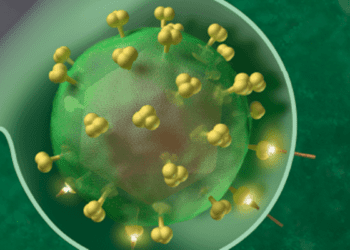The Scan by 2 Minute Medicine®: Cystic Fibrosis and Make-A-Wish, Wyoming Bans Abortion Pills, Justin Bieber and Ramsay Hunt Syndrome, Colon Cancer in Young Adults
4-1-2023
The Scan by 2 Minute Medicine® is a pop-culture medical newsletter and exclusive benefit for 2 Minute Medicine Plus subscribers.
Cystic Fibrosis and Make-A-Wish
The Story: The Make-A-Wish foundation recently announced that, beginning in January, cystic fibrosis (CF) patients will no longer automatically qualify for a wish. The non-profit foundation which grants wishes to children with critical illnesses cited major medical advancements which have allowed for CF patients to live longer, and healthier lives, as the reason that led to the decision. However, patients who have complications or factors that worsen their CF will still be considered on a case-by-case basis. Many are taking the recent changes as a great sign of advancement in CF care, while others are wary of the impact on those living with the disease.
Cystic Fibrosis
CF is a genetic disease that occurs when an individual inherits two defective copies of the gene encoding the protein called the cystic fibrosis transmembrane conductance regulator (CFTR). The result of the genetic condition is a buildup of thick mucus lining the airways and other tracts throughout the body. Mucus buildup in the airways makes breathing difficult, with coughing and wheezing, and leaves patients susceptible to recurrent chest infections. Although CF is most known for its impacts on the respiratory system, it also affects the digestive system. Mucus blockage in the pancreas can lead to impaired nutrient absorption, poor weight gain, diarrhea, foul-smelling stools, and even pancreatitis. With more than 30,000 people in the United States living with CF, the disease is the most common inherited condition amongst Caucasian Americans. The outlook for a CF patient used to be very bleak: around 70 years ago, the life-expectancy for a CF patient was only 4-5 years. Although CF patients still live a limited life compared to those without the disease, with significant advancements in treatment, CF patients now have a median life expectancy of around 50 years old. Early diagnosis and treatment have also played a role in these dramatic changes in life expectancy, with many countries instituting newborn screening for the disease in the first few days of life.
Advancements and Limitations
Although the Make-A-Wish news may sound disappointing, given that young patients will no longer automatically receive a wish, many are highlighting that it is positive news that CF is no longer considered a critical illness. However, CF is not the same in every patient, as there are thousands of different possible mutations in the CFTR gene identified that can precipitate the disease. For those who have one of the more common CF mutations, drug advancements that can modulate the effect of the CFTR transport protein can lead to massive improvements in symptoms and quality of life. But for those without a common and currently treatable form of the disease, a CF diagnosis signals an uphill battle with many complications. Moreover, access to these ground-breaking technologies has been a significant issue. For example, Trikafta, a triple drug treatment that targets the root cause of around 90% of CF cases, is exorbitantly expensive, with an estimated cost of around $300,000 per patient per year. With price tags like this, it’s no surprise that estimates suggest that over 40% of CF patients have difficulties paying for medications or treatment regimens. However, even for those who do have access to life-changing medications, dealing with CF is still a challenge. As a result, some CF patients are questioning the new Make-A-Wish decision, citing that even though CF patients can expect longer and healthier lives than in the past, they still must deal with complications, frequent medical appointments, and unique challenges compared to their peers.
Wyoming Bans Abortion Pills
Days ago, Wyoming became the first state to ban abortion pills. Abortion pills facilitate medical abortions, which is currently the most common way to terminate a pregnancy in the United States. Since Roe v. Wade was overturned in June of 2022, many states have restricted abortion access. However, Wyoming is the first state to ban these medications, separate from an overall abortion ban. The new legislation outlaws any medication used to terminate a pregnancy, however, certain drugs coined the “morning-after pill” are exempt from the ban. The use of abortion pills for medical emergencies and treatments for natural miscarriages also remain exceptions.
Abortion rates in the United States have been on the decline for years, although annual estimates remain at over 600,000 abortions per year. However, research suggests that restrictive abortion laws will not necessarily lead to fewer abortions. Rather than reducing the total number of abortions, restrictive laws tend to lead to unsafe abortion practices using potentially harmful interventions. In fact, unsafe abortion remains a leading cause of maternal mortality worldwide. Bleeding, infection, and poisoning are among the many possible complications of obtaining an abortion without a medical professional or appropriate medicinal interventions. However, the burden of restrictive abortion legislation is not spread equally. Findings suggest that marginalized individuals, by race or socioeconomic status, are the largest abortion-users in the United States, and the ones to be most impacted by changes in legislation. Restrictive abortion laws therefore risk exacerbating existing social inequalities.
Although restrictions on abortion are popping up all over the country, these laws are being faced with significant resistance. In fact, just days after the Wyoming ban was announced, it was temporarily blocked in court following a lawsuit filed by abortion rights activists. Only time will tell if the ban will hold up in court.
Justin Bieber and Ramsay Hunt Syndrome
In June, Justin Bieber was forced to postpone and even cancel tour dates on his ‘Justice’ world tour due to facial paralysis as a result of Ramsay Hunt Syndrome (RHS). Recently, he provided an update on his condition, and shared the good news that is facial paralysis has resolved. While the world is happy to hear that the singer is back in good form, the situation is once again bringing attention to RHS.
RHS ensues when the varicella zoster virus (VZV), the virus that causes both chicken pox and shingles, affects the facial nerve. Among other functions, the facial nerve helps the muscles of the face to move, so infection can result in facial paralysis on the affected side. Additional symptoms include hearing loss, dry mouth and eyes, altered taste perception, and more. Although those who receive early treatment with antiviral medications and steroids can have complete remission of their symptoms, others are not so lucky and can have lasting muscle weakness and hearing complications.
When someone experiences an infection with VZV, the virus can remain dormant in their body for years. It is when the virus gets reactivated that issues such as shingles and RHS can transpire. States of immunosuppression and hormonal changes are known to be linked with VZV reactivation. However, new causes of this reactivation are always being discovered. While many were quick to question whether COVID-19 vaccination contributed to the reactivation of VZV seen in Justin Bieber, research has also pointed out that those who experience a COVID-19 infection are also at increased risk of viral reactivation, in the form of shingles or RHS. Although we will likely never know the exact reason why RHS precipitated in Justin Bieber, we do know that eligible patients who receive a shingles vaccine have greater protection against shingles and RHS.
Colon Cancer in Young Adults
Colon cancer is making headlines these days, but not for good reason: statistics show that more and more young people are being affected by the disease. Colon cancer is one of the most commonly diagnosed cancers in the United States, and most people are diagnosed in their late 60s or early 70s. For many, colon cancer isn’t on their radar until they start receiving colonoscopies at age 45, but recent findings suggest that people as young as 20 years old should be on the lookout for symptoms of the disease. In fact, recent data suggests that 20% of colon cancer cases are occurring in people under the age of 55.
There’s no doubt that colon cancer cases in young adults are on the rise. In the past 20 years alone, the proportion of cases in the under 55 category has nearly doubled. Not only is the rise in cases concerning, but so too is the rise in deaths in this age group. Experts aren’t exactly sure why we are seeing such an increase in colon cancer cases in young people, but many known risk factors, such as obesity, smoking, family history, alcohol consumption, and a lack of physical activity may be at play. Given that regular screening for colon cancer doesn’t happen until someone is in their mid-40s, knowing the signs and symptoms of the disease is the best way to protect yourself. Changes in bowel movements, blood in the stool, abdominal pain, fatigue, and unexplained weight loss are all symptoms that should warrant further investigation.
©2023 2 Minute Medicine, Inc. All rights reserved. No works may be reproduced without expressed written consent from 2 Minute Medicine, Inc. Inquire about licensing here. No article should be construed as medical advice and is not intended as such by the authors or by 2 Minute Medicine, Inc



![2MM: AI Roundup- AI Cancer Test, Smarter Hospitals, Faster Drug Discovery, and Mental Health Tech [May 2nd, 2025]](https://www.2minutemedicine.com/wp-content/uploads/2025/05/Untitled-design-350x250.png)





